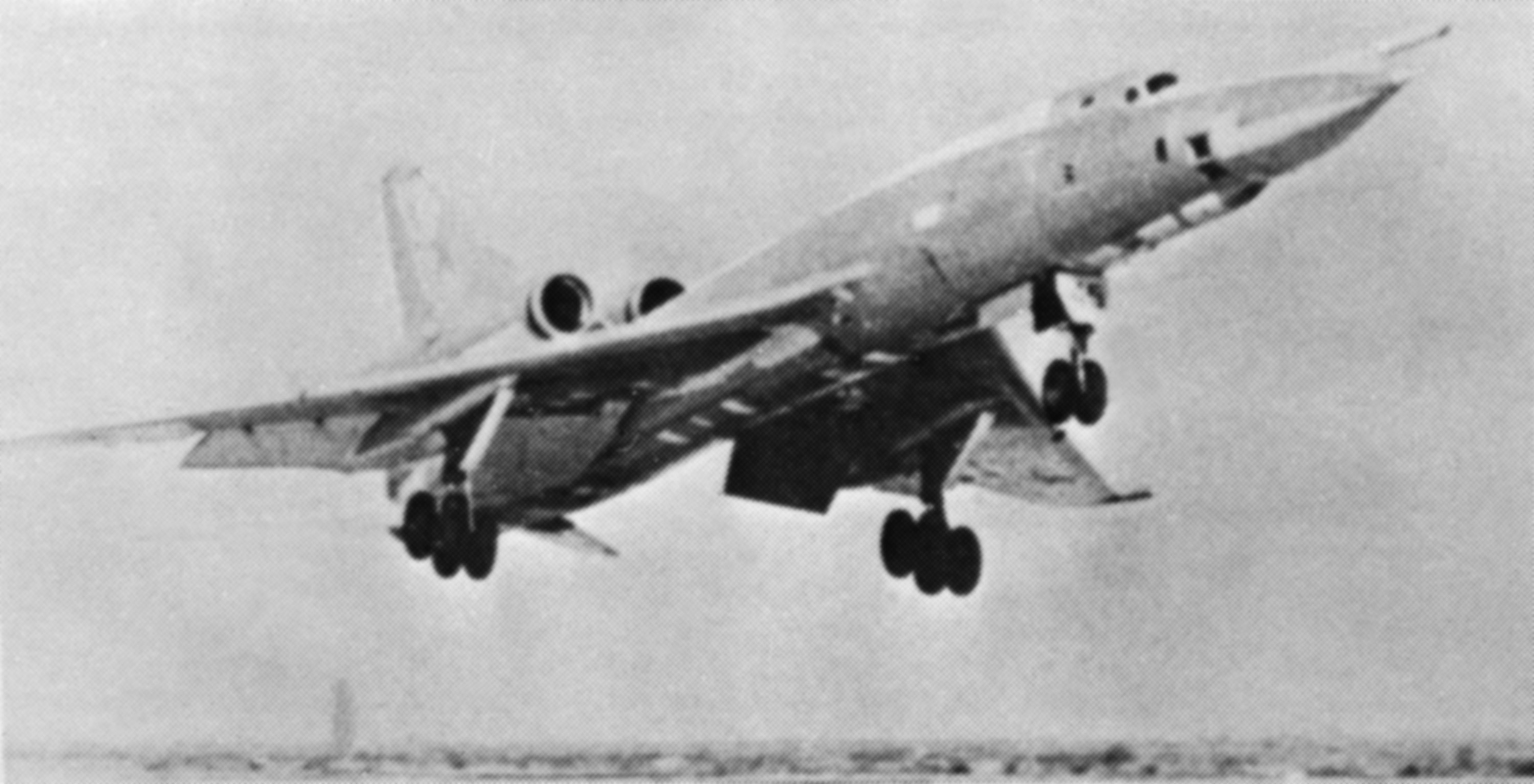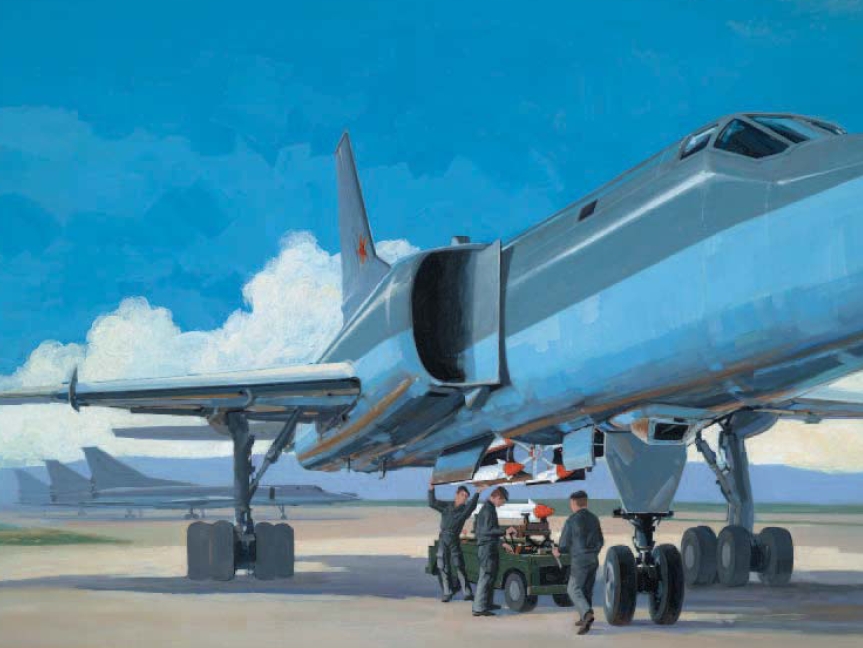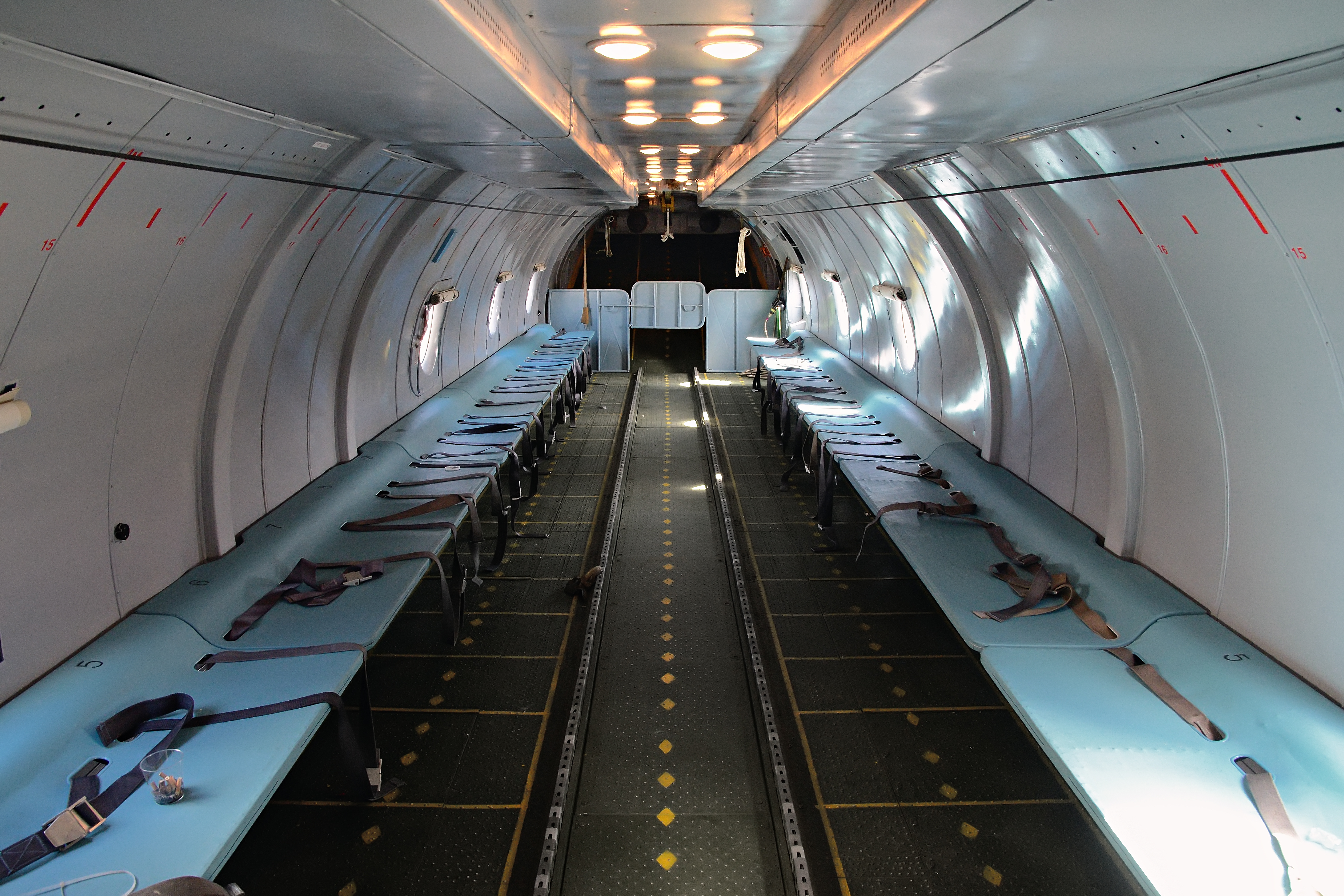|
Ukrainka (air Base)
: ''For the Ukrainian poet and writer, see Lesya Ukrainka.'' Ukrainka (also known as Ookrainka and Seryshevo) is one of Russia's largest strategic Long Range Aviation bases in the Russian Far East. Located in Amur Oblast, Russia, 28 km north of Belogorsk, and 8 km north of the town of Seryshevo, it is a major nuclear bomber base, with large tarmacs and nearly 40 revetments. The base is home to the 79th Heavy Bomber Aviation Regiment and the 182nd Guards Heavy Bomber Aviation Regiment both of the 326th Heavy Bomber Aviation Division. In 1955, Ukrainka was one of only six Soviet bases capable of handling the Myasishchev M-4 (NATO: Bison) bomber. The Tupolev Tu-22 (NATO: Blinder) operated from the base in the 1960s-1970s, and by the 1980s, its fleet consisted of a large number of Tupolev Tu-95K22 (NATO: Bear-G) and a smaller number of Tu-95K (NATO: Bear-B) aircraft. By 1994, all of the early Tu-95 variants had been replaced by the Tu-95MS (NATO: Bear-H). In 1998, it ... [...More Info...] [...Related Items...] OR: [Wikipedia] [Google] [Baidu] |
Lesya Ukrainka
Lesya Ukrainka ( uk, Леся Українка ; born Larysa Petrivna Kosach, uk, Лариса Петрівна Косач; – ) was one of Ukrainian literature's foremost writers, best known for her poems and plays. She was also an active political, civil, and feminist activist. Among her best-known works are the collections of poems ''On the wings of songs'' (1893), ''Thoughts and Dreams'' (1899), ''Echos'' (1902), the epic poem ''Ancient fairy tale'' (1893), ''One word'' (1903), plays ''Princess'' (1913), ''Cassandra'' (1903—1907), ''In the Catacombs'' (1905), and ''Forest Song'' (1911). Biography Lesya Ukrainka was born in 1871 in the town of Novohrad-Volynskyi (now Zviahel) of Ukraine. She was the second child of Ukrainian writer and publisher Olha Drahomanova-Kosach, better known under her literary pseudonym Olena Pchilka. Ukrainka's father was Petro Kosach (from the Kosača noble family), head of the district assembly of conciliators, who came from the northern ... [...More Info...] [...Related Items...] OR: [Wikipedia] [Google] [Baidu] |
Tupolev Tu-22
The Tupolev Tu-22 ( NATO reporting name: Blinder) was the first supersonic bomber to enter production in the Soviet Union. Manufactured by Tupolev, the Tu-22 entered service with the Soviet military in the 1960s. The aircraft was a disappointment, lacking both the speed and range that had been expected. It was also a difficult design to fly and maintain. It was produced in small numbers, especially compared to the Tupolev Tu-16 it was designed to replace. The aircraft was later adapted for other roles, notably as the Tu-22R reconnaissance aircraft and as carriers for the long-range Kh-22 anti-shipping missile, antiship missile. Tu-22s were sold to other nations, including Libyan Arab Jamahiriya, Libya and Ba'athist Iraq, Iraq. The Tu-22 was one of the few Soviet jet bombers to see combat: Libyan Tu-22s were used Uganda–Tanzania War, against Tanzania Chadian–Libyan conflict, and Chad, and Iraqi Tu-22s were used during the Iran–Iraq War. Development Previous efforts In th ... [...More Info...] [...Related Items...] OR: [Wikipedia] [Google] [Baidu] |
Tupolev Tu-22M
The Tupolev Tu-22M (russian: Туполев Ту-22М; NATO reporting name: Backfire) is a supersonic, variable-sweep wing, long-range strategic and maritime strike bomber developed by the Tupolev, Tupolev Design Bureau in the 1960s. According to some sources, the bomber was believed to be designated Tu-26 at one time. During the Cold War, the Tu-22M was operated by the Soviet Air Forces (VVS) in a missile carrier strategic bombing role, and by the Soviet Naval Aviation (''Aviatsiya Voyenno-Morskogo Flota'', AVMF) in a long-range maritime anti-shipping role. As of 2021, before the 2022 Russian invasion of Ukraine, there were 66 of the aircraft in service. Development In 1962, after the introduction of the Tupolev Tu-22, it became increasingly clear that the aircraft was inadequate in its role as a bomber. In addition to widespread unserviceability and maintenance problems, the Tu-22's handling characteristics proved to be dangerous. Its landing speed was greater than previ ... [...More Info...] [...Related Items...] OR: [Wikipedia] [Google] [Baidu] |
37th Air Army
The 37th Air Army ( rus, 37-я воздушная армия, r=37 Vozdushnaya Armiya) of the High Supreme Command (Strategic Purpose) was the strategic bomber force of the Russian Air Force from 1998 to 2009. It was equipped with Tupolev Tu-95MS and Tu-160 armed with nuclear cruise missiles, and the intermediate range Tu-22M3 bombers. It was the successor to the Soviet Union's Long Range Aviation, which once had several Air Armies, including the 37th. The 37th Air Army was originally formed in 1949 by redesignating the 4th Air Army in the Northern Group of Forces in Poland. It was active there until 1968. It was reformed by a decree of 13 March 1980, along with the 24th, 30th, and 46th Air Armies, which together replaced the Long Range Aviation headquarters, which was disbanded. It appears the decree may have been put into effect and the headquarters actually reformed on 1 August 1980.Michael Holm37th Air Army VGK SN accessed September 2011 Strategic aviation is the sole Russ ... [...More Info...] [...Related Items...] OR: [Wikipedia] [Google] [Baidu] |
Leningrad Military District
The Leningrad Military District was a military district of the Armed Forces of the Russian Federation. In 2010 it was merged with the Moscow Military District, the Northern Fleet and the Baltic Fleet to form the new Western Military District. History The Leningrad Military District was originally formed as the Petrograd Military District after the October Revolution of 1917 up to the beginning of the formation of the Red Army. The Petrograd District was established as a part of the Red Army (RKKA) by order в"– 71 of the Highest Military Council of 6 September 1918. On 1 February 1924, by the order в"– 126 the Revolutionary Military Councils of the USSR the Petrograd military district was renamed the Leningrad Military District. Markian Popov was appointed District Commander in 1939. Its main purpose was the defence of the Kola Peninsula and the northern shores of the Gulf of Finland. On the right flank it bordered with the Arkhangelsk Military District, on the left — with ... [...More Info...] [...Related Items...] OR: [Wikipedia] [Google] [Baidu] |
Soltsy-2
Soltsy-2 (also spelled Sol'tsy, Soltsy, Solcy, Solcy 2) is an air base in Novgorod Oblast, Russia located 2 km north of Soltsy and 72 km southwest of Novgorod. It contains large aircraft revetments, with a separate compound of 9 hardened areas about 1 mile from the airfield. The base is home to the 40th Composite Aviation Regiment which flies the Tu-22M as part of the 22nd Guards Heavy Bomber Aviation Division. In 1992, the headquarters of the 326th Heavy Bomber Aviation Division (326 TBAD) arrived from Tartu Raadi Airfield in newly independent Estonia. In 1998 the division headquarters was moved to Ukrainka in the Far East. The 840th Heavy Bomber Aviation Regiment (840 TBAP) flew Tupolev Tu-22M aircraft from November 1951 through to 2010. The regiment was disbanded in 2010 following the changes initiated by the Russian military reforms from 2008. Airfield is properly maintained for occasional training of Russian Air Force and to service governmental flights in N ... [...More Info...] [...Related Items...] OR: [Wikipedia] [Google] [Baidu] |
Nuclear Threat Initiative
The Nuclear Threat Initiative, generally referred to as NTI, is a non-profit organization located in Washington, D.C. The American foreign policy think tank was founded in 2001 by former U.S. Senator Sam Nunn and describes itself as a "nonprofit, nonpartisan global security organization focused on reducing nuclear and biological threats imperiling humanity." NTI has four policy programs: the Global Nuclear Policy Program, Nuclear Materials Security, Scientific and Technical Affairs, and Global Biological Policy and Programs (stylized as NTI , bio). Mission NTI's self-described mission is "to transform global security by driving systemic solutions to nuclear and biological threats imperiling humanity." History NTI was founded in 2001 by former U.S. Senator Sam Nunn and philanthropist Ted Turner. The launch event was held at the National Press Club on January 8, 2001. An event celebrating NTI’s 20th anniversary was held on April 12, 2022, with a one-year delay due to the COVID ... [...More Info...] [...Related Items...] OR: [Wikipedia] [Google] [Baidu] |
RFE/RL
Radio Free Europe/Radio Liberty (RFE/RL) is a United States government funded organization that broadcasts and reports news, information, and analysis to countries in Eastern Europe, Central Asia, Caucasus, and the Middle East where it says that "the free flow of information is either banned by government authorities or not fully developed". RFE/RL is a private, non-profit 501(c)(3) corporation supervised by the U.S. Agency for Global Media, an independent government agency overseeing all U.S. federal government international broadcasting services. Daisy Sindelar is the vice president and editor-in-chief of RFE. RFE/RL broadcasts in 27 languages to 23 countries. The organization has been headquartered in Prague, Czech Republic, since 1995, and has 21 local bureaus with over 500 core staff and 1,300 stringers and freelancers in countries throughout their broadcast region. In addition, it has 700 employees at its headquarters and corporate office in Washington, D.C. Radio Free Eu ... [...More Info...] [...Related Items...] OR: [Wikipedia] [Google] [Baidu] |
Kazakh SSR
; kk, Қазақ Советтік Социалистік Республикасы) *1991: Republic of Kazakhstan (russian: Республика Казахстан; kk, Қазақстан Республикасы) , linking_name = the Kazakh Soviet Socialist Republic , year_start = 1936 , event_start = Elevation to a Union Republic , date_start = 5 December , event1 = Jeltoqsan riots , date_event1 = 16 December 1986 , event2 = Sovereignty declared , date_event2 = 25 October 1990 , event3 = Renamed Republic of Kazakhstan , date_event3 = 10 December 1991 , event4 = Independence declared , date_event4 = 16 December 1991 , date_end = 26 December , event_end = Independence recognised , year_end = 1991 , p1 = Kazakh ASSR , s1 = Kazakhstan ... [...More Info...] [...Related Items...] OR: [Wikipedia] [Google] [Baidu] |
Antonov An-26
The Antonov An-26 ( NATO reporting name: Curl) is a twin-engined turboprop civilian and military transport aircraft, designed and produced in the Soviet Union from 1969 to 1986.Gordon, Yefim. Komissarov, Dmitry & Sergey. "Antonov's Turboprop Twins". Hinkley. Midland. 2003. Development While the An-24T tactical transport had proved successful in supporting Soviet troops in austere locations, its ventral loading hatch restricted the handling of cargo, and in particular vehicles, and made it less effective than hoped in parachuting men and supplies. As a result, interest in a version with a retractable cargo ramp increased, and the Antonov design bureau decided in 1966 to begin development on the new An-26 derivative, in advance of an official order. The cargo ramp was based on that design and allowed the cargo deck to be sealed and pressurised in flight. When loading cargo, it could either be lowered to allow vehicles to be driven in, or slid beneath the aircraft's fuselage, so th ... [...More Info...] [...Related Items...] OR: [Wikipedia] [Google] [Baidu] |
Tupolev Tu-134
The Tupolev Tu-134 (NATO reporting name: Crusty) is a twin-engined, narrow-body jet airliner built in the Soviet Union for short and medium-haul routes from 1966 to 1989. The original version featured a glazed-nose design and, like certain other Russian airliners (including its sister model the Tu-154), it can operate from unpaved airfields. One of the most widely used aircraft in former Comecon countries, the number in active service is decreasing because of operational safety concerns and noise restrictions. The model has seen long-term service with some 42 countries, with some European airlines having scheduled as many as 12 daily takeoffs and landings per plane. In addition to regular passenger service, it has also been used in various air force, army and navy support roles; for pilot and navigator training; and for aviation research and test projects. In recent years, a number of Tu-134s have been converted for use as VIP transports and business jets. A total of 854 Tu-1 ... [...More Info...] [...Related Items...] OR: [Wikipedia] [Google] [Baidu] |
Myasishchev 3M
The Myasishchev M-4 ''Molot'' (russian: Молот (Hammer), USAF/DoD reporting name "Type 37", ASCC reporting name Bison) was a four-engined strategic bomber designed by Vladimir Mikhailovich Myasishchev and manufactured by the Soviet Union in the 1950s to provide a Long Range Aviation bomber capable of attacking targets in North America. The aircraft fell quite short of its intended range and was not really capable of attacking the most valuable targets in the United States. As this became clear, production was shut down. In spite of the failure to produce a capable strategic design and the resulting small numbers, the M-4 nevertheless sparked fears of a "bomber gap" when 18 of the aircraft were flown in a public demonstration on May Day in 1954. The US responded by building hundreds of Boeing B-47s and B-52s to counter this perceived threat. The design was updated with more efficient engines, inflight refuelling support and the removal of the glass nose for optical bombing an ... [...More Info...] [...Related Items...] OR: [Wikipedia] [Google] [Baidu] |






